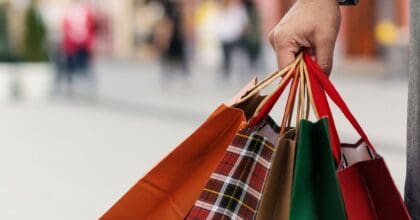Supermarket sweeps up childrenswear sales
Convenience is king for today’s childrenswear buyers, as new research from Mintel finds more and more of us are throwing kids clothing in to our shopping baskets alongside our weekly shop.
Mintel’s research reveals that, for the first time, value sales from supermarkets make up the biggest proportion of spend for consumers, beating all other outlets with 29% share of the childrenswear market. Meanwhile, specialists in the childrenswear sector such as clothing multiples (26.5%) and department stores (7%) have at best only retained market share by focusing on the premium end of the market. Traditional mail order purchases (3.5%) have declined sharply as a result of rising online sales, which Mintel currently estimates to account for around 12% of sales.
The supermarket is also the first port of call for childrenswear shoppers, with almost seven in ten (68%) of consumers purchasing their childrenswear there – making it the nation’s leading childrenswear destination. Twenty-five million Brits now buy childrenswear from the supermarket, and an additional 8.5 million buy schoolwear at the same destination. Furthermore, in a matter of just four years, the market share of childrenswear in supermarkets has doubled from 14% in 2004 to a substantial 29% in 2009.
Michelle Strutton, Senior Fashion Analyst at Mintel said:
“There is increasing evidence of polarisation in consumer purchasing habits, with value retailers and supermarkets profiting at the expense of variety stores and sports stores in particular, which do not have the unique selling points of low price or high quality. Although the impact of the economic slowdown since 2007 has raised the profile of discounters and supermarkets, it has been the wider investment by such stores in improving the quality and fashion elements of their clothing that has enabled them to take on existing players in the market so successfully. “
The childrenswear market has recently passed through a difficult period. The twin effects of a slowdown in the UK economy and the strengthening presence of value retailers have had the effect of reducing market value. In 2009, sales of childrenswear made a modest bounceback to £5 billion after falling in 2007 and 2008. The falls in recent years can be attributed to low-cost imports, the growth of low-price supermarkets and discounters, combined with the effects of the recent recession. Sales are expected to return to growth in 2010 thanks to improved consumer confidence, but over the next five years the market is forecast to grow by just 3% to a value approaching £5.2 billion in 2014.
While girlswear still wears the trousers in terms of value, with annual value sales of just over £2 billion, it is infantswear which is the real shining light in the childrenswear marketplace. Accounting for almost a third (31%) of childrenswear sales, infantswear has been a real winner in recent years. Sales of infantswear have risen 9% in the last 5 years to reach £1.5 billion, while the girlswear and boyswear sectors have both seen decreases of over 3%. While both those sectors have both been badly affected by economic pressures, in contrast infantswear has prospered – helped by growing infant numbers, older and more affluent parents and gifting.
Meanwhile it seems that tantrums, every parents shopping nightmare, may have had their influence on today’s hassled clothes shoppers. While one in five (22%) of us have the most say in the clothes we buy for our children, as many as 18% of shoppers let their children choose what clothing they buy. But it seems as a nation, we’re not keen to let popular culture dictate what our children are wearing – just 3% of us are willing to pay more for celebrity-styled clothes and a quarter of shoppers agree that children’s clothes are too grown-up.
The downturn has also had its impact on how we shop. Over four in ten (42%) of shoppers are more likely to wait for the sales now. Furthermore, three in ten of us (30%) now shop at less expensive stores, while the same number shop only when we need to. Finally, it seems that while budgets have been hit, our kid’s clothes allowance hasn’t as 14% consumers admit that they haven’t cut back on spend on the children, only on themselves, since the downturn.
-
Mintel StoreGet smart fast with our exclusive market research reports, delivering the latest data, innovation, trends and strategic recommendations....View reports
-
Mintel LeapMintel Leap is a revolutionary new AI-powered platform that will transform your research process....Book a demo







































